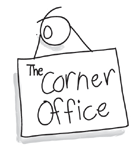Alberta: Can Government Funding Actually Kill High Tech?
That is, until you read the call for applications for the Chair and Independent Board members to serve on the corporation. What becomes clear is that the AEC is no lifeline to the high tech community; instead, it's a nicely-sized government subsidy for venture capital funds who will agree to invest in Alberta.
Here's what the notice says (available on Ray & Berndtson's Canadian website): "$100 million has been allocated to the fund by the Province of Alberta to co-invest in a number of early stage capital funds. Through its activities, matching private investment will be attracted, and a number of new venture funds will launch operations in Alberta, directed by experienced fund managers. "
A government led fund of funds? Those of us who have endured this in Ontario can tell you what that means (p.s. it's not good). Anyone trying to raise a fund in or related to Alberta will have a very tough time convincing any other LP to participate until this whole AEC scheme is worked out. Ask any Ontario VC how much they have enjoyed having their fundraising efforts brought to a complete standstill by the Ontario government's fund of funds, which struggled for over a year to select a manager and to start operations.
It's also a colossal mistake to assume that a share of a $100 million is appealing enough to attract top tier venture fund managers to the region. Which will further delay deployment of capital to new funds. Which in turn means there's even less (not more) near term cash floating around for Alberta companies. I won't itemize the other woes this approach creates, but those of you nearby know what I'm talking about. Those of you in Alberta who want more details, buy me a shot of scotch and we'll talk.
I'm all for job creation, but job creation for fund managers and VCs is not going to boost the growth of the Alberta high tech community. It's important to note that the Alberta high tech community is hardly in its infancy. Companies abound, many of them led by second and third time successful entrepreneurs. I can start in Edmonton with Semanti, run by the ex-Intuit team and keep going south until I hit the US border. What it is is cash-starved and as emaciated as the Olsen twins.
I'm going to say what every Albertan as been waiting for a Torontonian to say: don't follow our example on this one.

